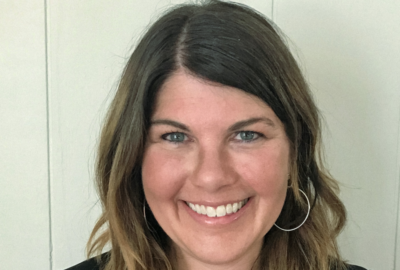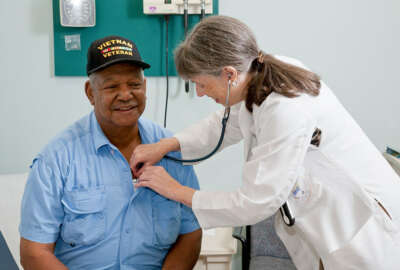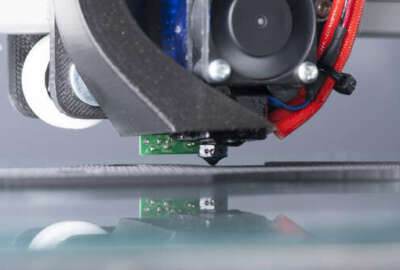
After years of practice, VA says its innovation ecosystem was ready-made for the pandemic
Employees involved in the Veterans Health Administration's Innovation Ecosystem are pivoting their projects and creating new ones to respond to the pandemic. VA...
The Veterans Health Administration has tried to instill a message within its workforce over the course of a few years.
Innovation is hard, and success doesn’t always come quickly. It often starts small at one hospital, spreading slowly across the VA enterprise. There are often setbacks. Supervisors may never get on board. Some projects never work out.
“It’s sometimes hard to convince leadership and those that may be making the investment that investing in the infrastructure is absolutely foundational and vital to really achieving success,” Ryan Vega, executive director of VHA’s Innovation Ecosystem, said in a recent interview.
Over the past few years, VHA has tried support its employees who, throughout the course of their day-to-day work, saw a problem and found a solution. Through VHA’s Innovation Ecosystem, it’s built an infrastructure to fund, develop and spread viable solutions throughout the VA network.
Annual events like VHA’s Innovation Experience help train employees to pitch their ideas and gather support from leadership.
Then the pandemic hit.
“We were ready,” Vega said. “VA was ready when the pandemic hit to deploy this workforce and deploy this innovative spirit to the pandemic relief.”
VA doctors from Richmond, Virginia, for example, found a way to more safely intubate veterans by developing a clear box to place around their patients.
Employees from VA Puget Sound Health Care System in Washington developed new shields to place between optometrists and their patients, so doctors could more safely perform eye exams during the pandemic.
The staff in Charleston, South Carolina, heard from their patients who struggled to remove their face coverings without damaging their hearing aids.
“This facility came up with a solution of [putting] a cover on a hearing aid so that they would still work, but they wouldn’t get damaged when they were wearing face masks,” Steven Lieberman, acting deputy undersecretary for health, said from a nearly empty National Press Club last week where VHA hosted a virtual, three-day “Innovation Experience.”
“These are all exciting innovations that have gone on, and I expect they will get shared around the country in the coming months,” he added.
Over the course of three days, employees shared their ideas via video, with a panel of experts from the VHA Innovation Ecosystem giving feedback and asking questions from their own homes and offices.
Many of the employees are part of VHA’s Innovation Network, which encourages members of the workforce to design, develop, test and implement ideas that have the potential to improve veterans’ health care or lower the costs of delivering that care.
Some of those projects are at various stages of development in VHA’s Spark-Seed-Spread investment and accelerator program and often follow a regular funding and procurement cycle, Vega said.
“You get into this rhythm of how projects are being replicated and how they’re moving and maturing. As with everyone, business as usual stopped come February or March,” he said. “It was amazing to see how they took what they were doing and actually applied it to the pandemic relief efforts.”
One project in the Innovators Network pivoted entirely and changed its operating model to adapt to the pandemic. Charles Franklin, an employee at the VA Boston Healthcare System, had developed a rideshare program for veterans in the region. Through ridesharing apps like Uber and Lyft, the program helped veterans get to job interviews and medical appointments.
“Those appointments didn’t exist come March,” Vega said. “Instead of just letting the practice go dry or remain on pause, they recognized that they could utilize this rideshare program to actually deliver food, paper goods or personal products to veterans who perhaps were concerned about going out into public or didn’t have the ability to go out into public and get some of the things they needed to get. Those types of examples gave us a lot of pride in the workforce and the staff.”
Other projects that got their start within the VHA Innovation Ecosystem years ago were major players in the department’s broader pandemic response.
The Food and Drug Administration and National Institutes of Health partnered with VA’s 3D printing network earlier this year. The agencies signed a memorandum of understanding with America Makes, a national accelerator for additive manufacturing and 3D printing.
VA is drawing on its clinical expertise to help public and private sector organizations develop and test safe and effective 3D-printed personal protective equipment and other tools. The department, for example, published testing criteria for 3D-printed nasal swabs on NIH’s website.
Partners produced and distributed more than 1 million products through the America Makes collaboration, Vega said.
The pandemic hasn’t necessarily validated the work of VHA Innovation Ecosystem. But Vega said it has served as a reminder to employees and leaders about how difficult innovation can be, especially within a large enterprise like VA.
“What it helped at least illustrate was that all of the hard work that hundreds of people across this organization have put in to build this ecosystem — even the projects that weren’t successful and even the ideas out of left field that didn’t even materialize — it was about that workforce, about that culture and foundation to put us in a position to then really leverage these innovations when we needed them,” he said.
Copyright © 2025 Federal News Network. All rights reserved. This website is not intended for users located within the European Economic Area.
Nicole Ogrysko is a reporter for Federal News Network focusing on the federal workforce and federal pay and benefits.
Follow @nogryskoWFED
Related Stories

VA innovators see home-grown ideas spread far and wide across veterans health network




